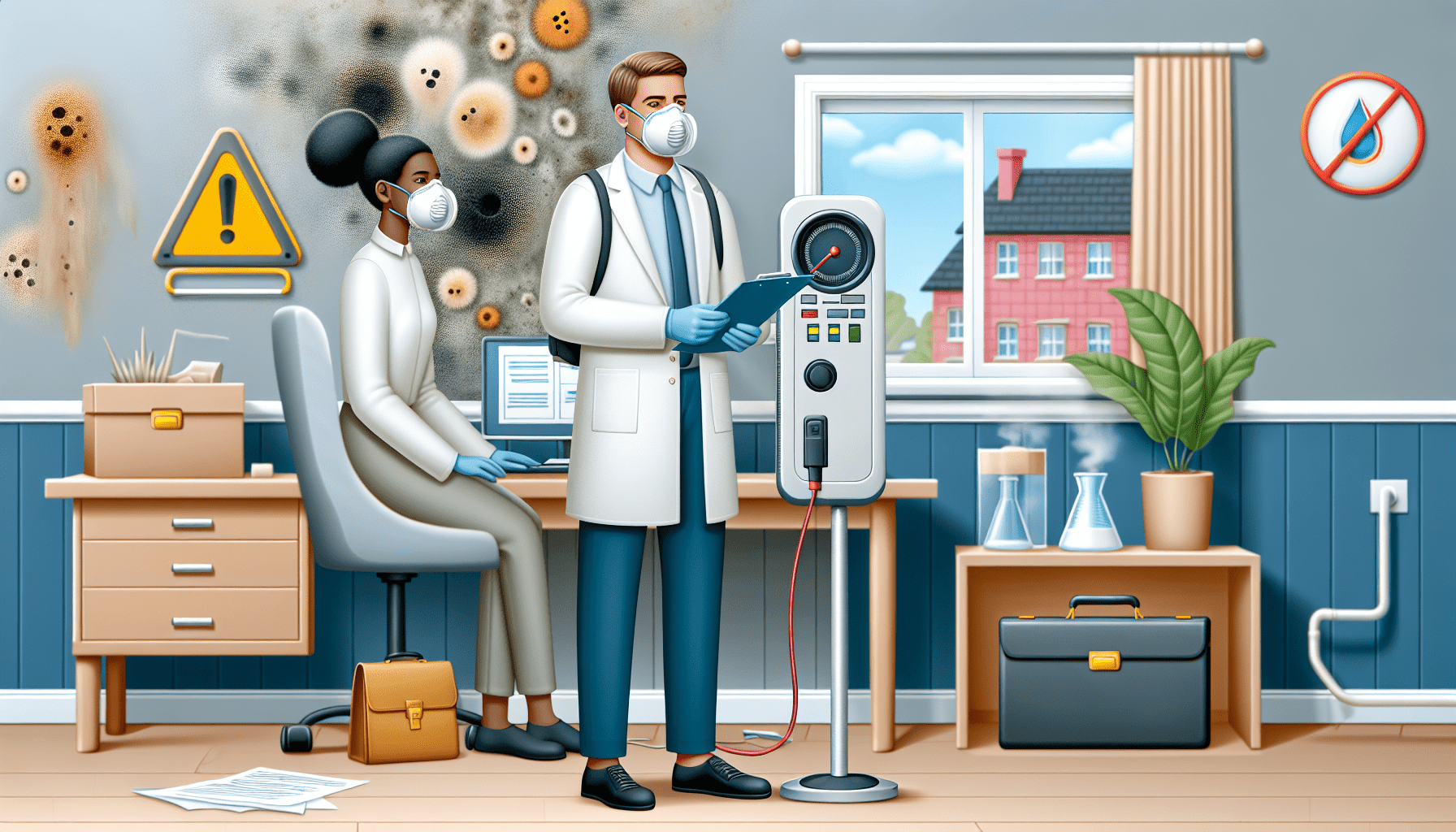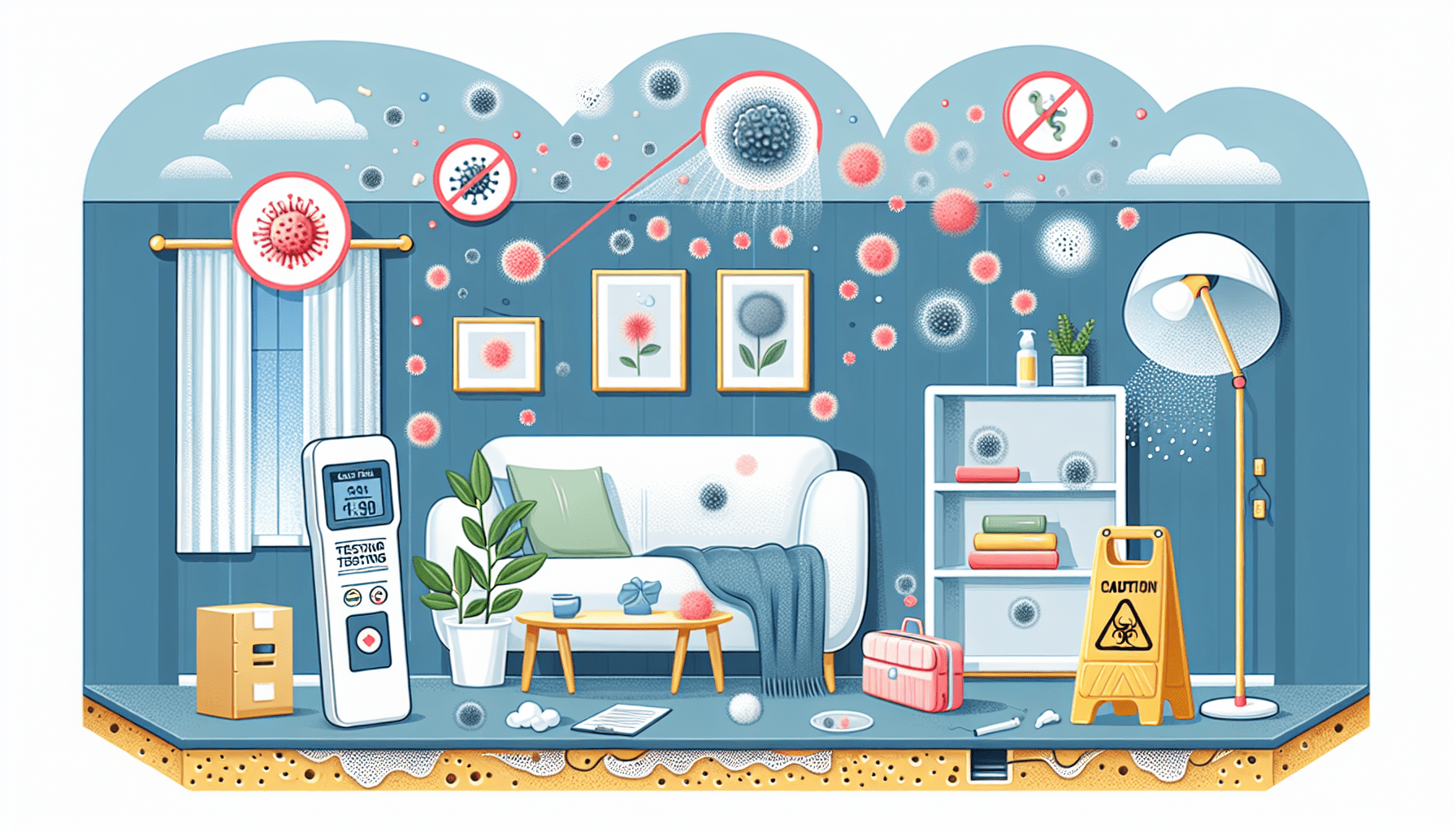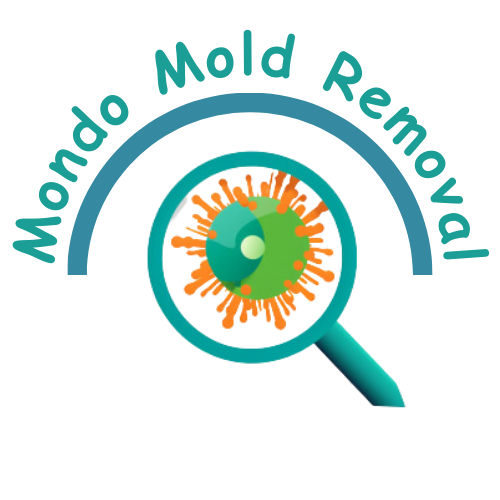You may not be aware, but ensuring good indoor air quality is essential for your health and well-being. Mold is a common problem that can greatly affect the quality of the air you breathe in your home. That’s why understanding the importance of indoor air quality testing for mold is crucial. By identifying and addressing potential mold issues, you can prevent respiratory problems, allergic reactions, and other health issues caused by mold spores. So, let’s explore the significance of indoor air quality testing for mold and how it can contribute to a healthier living environment for you and your loved ones.
What is Indoor Air Quality?
Definition of Indoor Air Quality
Indoor Air Quality (IAQ) refers to the quality of the air inside a building or structure, such as homes, offices, schools, and public places. It relates to the presence of pollutants, contaminants, and other factors that can affect the health and comfort of occupants. Good IAQ is important for ensuring a healthy living and working environment.
Factors that Affect Indoor Air Quality
Several factors can significantly impact indoor air quality. These include:
-
Ventilation: Proper ventilation helps in maintaining a constant flow of fresh air indoors and prevents the buildup of pollutants. Inadequate ventilation can cause stagnant air and increased pollutant levels.
-
Presence of pollutants: Various pollutants commonly found indoors include volatile organic compounds (VOCs) from cleaning products and building materials, carbon monoxide (CO) from incomplete combustion, radon gas, mold spores, allergens, and tobacco smoke.
-
Humidity and moisture levels: High humidity levels can lead to condensation and promote the growth of mold and other microorganisms. Additionally, excessive humidity can make the indoor environment uncomfortable.
-
Temperature: Extreme temperatures, both hot and cold, can affect indoor air quality and the comfort of occupants. High temperatures can accelerate the release of pollutants, while low temperatures can result in poor ventilation and increased moisture levels.
-
Building materials and furnishings: Certain building materials, such as asbestos, lead-based paints, and formaldehyde-based products, can release harmful substances into the air. Similarly, furnishings and carpets can trap dust and allergens if not properly maintained.
Understanding these factors is crucial in assessing and improving indoor air quality, especially when it comes to addressing the presence of mold.
Understanding Mold
Definition of Mold
Mold is a type of fungus that grows in the form of multicellular filaments called hyphae. It can thrive in various indoor environments, particularly in areas with high moisture levels. Mold reproduces by releasing spores into the air, which can cause health problems when inhaled in large quantities.
Common Types of Mold
There are several common types of mold that can be found indoors. These include:
-
Stachybotrys chartarum (also known as black mold): This is a type of mold commonly associated with water damage and excessive moisture. It has a distinct black or dark green appearance and produces mycotoxins that can cause health issues.
-
Aspergillus: This type of mold is often found in damp environments and can trigger allergic reactions in sensitive individuals. Aspergillus can come in various colors, including green, yellow, and gray.
-
Penicillium: Penicillium molds are often found in water-damaged materials and can produce a musty odor. They can also cause respiratory issues, especially in individuals with compromised immune systems.
-
Cladosporium: This mold can grow on both indoor and outdoor surfaces. It is often found in areas with high moisture levels, such as damp basements and bathrooms. Cladosporium can cause respiratory symptoms and allergies.
Understanding the different types of mold is crucial, as each type may require specific remediation methods and poses different risks to one’s health.
Effects of Mold on Health
Exposure to mold can have various adverse effects on human health. Some individuals are more susceptible to the health effects of mold than others, especially those with underlying respiratory conditions, allergies, or weakened immune systems.
Common health effects of mold exposure include:
-
Allergic reactions: Mold spores can trigger allergic reactions in sensitive individuals, leading to symptoms such as sneezing, coughing, itchy eyes, and a runny nose.
-
Respiratory problems: Prolonged exposure to mold can cause or worsen respiratory issues such as asthma and bronchitis. It can also lead to respiratory infections in susceptible individuals.
-
Irritation of the skin, eyes, and throat: Contact with mold or inhalation of mold spores can cause skin rashes, redness, eye irritation, and sore throat.
-
Systemic effects: In rare cases, prolonged exposure to certain types of mold, such as Stachybotrys chartarum, can result in more severe health effects, including fatigue, headaches, fever, and even neurological symptoms.
Understanding the potential health risks associated with mold exposure highlights the importance of indoor air quality testing for mold.

Significance of Indoor Air Quality Testing for Mold
Identifying Hidden Mold Growth
One of the primary reasons for conducting indoor air quality testing for mold is to identify hidden or concealed mold growth. Mold can often lurk behind walls, under floorboards, or in other inaccessible areas, making it difficult to detect with the naked eye. By testing the air and surfaces, professionals can identify the presence of mold even when it is not visible, helping homeowners and property managers take necessary steps for remediation.
Preventing Health Issues
Another significant reason for conducting indoor air quality testing for mold is to prevent potential health issues related to mold exposure. By identifying elevated levels of mold spores or the presence of specific mold species known to be harmful, individuals can take proactive measures to mitigate the risks. Prompt remediation can help ensure the well-being of occupants, particularly those with allergies, respiratory conditions, or compromised immune systems.
Preserving Property Value
Indoor air quality testing for mold is also crucial for preserving the value of a property. Mold contamination can significantly impact property values and make it difficult to sell or rent out a building. By conducting regular mold testing and remediation, property owners can address the issue before it becomes a major concern. This proactive approach can help maintain property value and protect one’s investment.
Types of Indoor Air Quality Testing
Air Sampling
Air sampling is a common method used to test indoor air quality for mold. It involves collecting air samples from different areas of a building to determine the concentration of mold spores present. These samples are then analyzed in a laboratory to identify the types and levels of mold present. Air sampling can help identify mold problems even in areas not visible or accessible for surface sampling.
Surface Sampling
Surface sampling involves collecting samples from visible surfaces, such as walls, ceilings, or furniture, to determine if mold growth is present. This method helps determine the extent of mold contamination and allows for targeted remediation efforts. Surface samples can be taken using swabs, tape lifts, or bulk samples, depending on the nature of the surface and the suspected mold growth.
Bulk Sampling
Bulk sampling involves collecting physical pieces or chunks of a material suspected to be contaminated with mold. These samples are typically sent to a laboratory for analysis to confirm the presence of mold and identify the species. Bulk sampling can be useful when assessing significant mold contamination, particularly in building materials or furnishings.

When Should Indoor Air Quality Testing be Conducted?
Visible Mold Growth
Indoor air quality testing for mold should be conducted when visible mold growth is present. If you notice mold growth on walls, ceilings, or other surfaces, it is a clear sign that there may be hidden mold growth or widespread contamination. By conducting testing, you can identify the extent of the problem and take appropriate action for remediation.
Unexplained Allergy Symptoms
If you or other occupants of a building experience unexplained allergy symptoms, such as coughing, sneezing, wheezing, or skin rashes, it may indicate possible mold exposure. While allergies can have various causes, mold should be considered as a potential culprit, especially if the symptoms improve when you are away from the building. Indoor air quality testing can help determine if mold is the underlying cause.
Musty Odor in the Indoor Environment
A musty odor is often an indication of mold growth. If you detect a persistent musty smell in your home or workplace, it is advisable to conduct indoor air quality testing to identify the source of the odor. Even if you do not see any visible mold, the presence of a musty odor suggests that there may be hidden mold growth that needs to be addressed.
The Process of Indoor Air Quality Testing for Mold
Hiring a Professional
To ensure accurate testing and reliable results, it is recommended to hire a professional indoor air quality testing company specializing in mold testing. Professionals have the necessary expertise, equipment, and experience to conduct thorough testing, interpret results, and provide appropriate recommendations for remediation.
Initial Inspection and Assessment
The indoor air quality testing process typically begins with an initial inspection and assessment. A trained professional will conduct a thorough visual inspection of the building and collect relevant information about the property’s history, existing conditions, and any known issues. This inspection helps identify areas of concern and guides the sampling strategy.
Sampling and Analysis
After the initial inspection, the professional will proceed with collecting air and/or surface samples, depending on the objectives of the testing. These samples are carefully collected following industry-standard procedures to ensure accuracy. The samples are then sent to a laboratory for analysis, where they are examined under a microscope or subjected to other appropriate testing methods.
Interpretation of Results
Once the laboratory analysis is complete, the professional will interpret the results based on established guidelines and protocols. They will provide a detailed report that includes information about the types and levels of mold present, as well as any recommendations for remediation if necessary. The professional can also help explain the significance of the results and answer any questions or concerns you may have.
Interpreting Indoor Air Quality Testing Results
Understanding Mold Spore Levels
The results of indoor air quality testing for mold typically provide information about the concentration of mold spores in the sampled areas. These spore levels are measured in spores per cubic meter of air (spores/m3). Interpretation of these results is crucial in determining if the spore levels are within acceptable limits or if mold contamination is present. Comparing the results to established guidelines helps understand the severity of the issue and guide appropriate remediation efforts.
Determining Mold Species
In addition to spore levels, indoor air quality testing can also identify the specific mold species present. This information is important as different mold species may pose different health risks and require specific remediation approaches. Knowing the exact mold species present allows for targeted remediation efforts and helps in assessing the potential impact on human health.
Comparing Results to Environmental Guidelines
The interpretation of indoor air quality testing results involves comparing the findings to established environmental guidelines and standards. These guidelines provide recommended thresholds for different mold species and spore levels. By comparing the results to these guidelines, professionals can determine if the indoor environment is within acceptable limits or if further action is necessary.
Preventing and Remediating Mold Contamination
Identifying and Eliminating Moisture Sources
Preventing mold growth starts with identifying and eliminating moisture sources in the indoor environment. Moisture is the primary factor that promotes the growth of mold. By addressing issues such as roof leaks, plumbing leaks, high humidity levels, or poor ventilation, you can minimize the conditions necessary for mold to flourish. Regular inspections and maintenance can help identify and rectify potential moisture problems before they lead to mold contamination.
Implementing Proper Ventilation
Proper ventilation is crucial in maintaining good indoor air quality and preventing mold growth. Adequate ventilation helps control moisture levels and promotes air circulation, reducing the chances of stagnant, humid air conducive to mold growth. Installing and maintaining ventilation systems, such as exhaust fans, air purifiers, and air exchange systems, can significantly contribute to a healthier indoor environment.
Taking Immediate Action for Remediation
If indoor air quality testing reveals mold contamination, taking immediate action for remediation is essential. Ignoring the problem or delaying remediation efforts can lead to further mold growth and increased health risks. Depending on the severity of the contamination, remediation may involve cleaning and removing affected materials, drying out the area, and implementing measures to prevent future mold growth. It is important to consult with a professional mold remediation specialist to ensure proper and effective remediation.
Choosing a Qualified Indoor Air Quality Testing Professional
Certifications and Credentials
When choosing an indoor air quality testing professional, it is important to consider their certifications and credentials. Look for professionals who have certifications from reputable organizations, such as the American Council for Accredited Certification (ACAC) or the National Environmental Health Association (NEHA). These certifications indicate that the professional has met certain standards of knowledge and competence in the field of indoor air quality testing.
Experience and Expertise
The experience and expertise of the indoor air quality testing professional are crucial factors to consider. Look for professionals who have a proven track record in the industry and have experience dealing with mold-related issues. An experienced professional is more likely to accurately identify mold problems, interpret test results correctly, and provide appropriate recommendations for remediation.
Client Reviews and References
Reading client reviews and seeking references can provide valuable insights into the professionalism and quality of service provided by an indoor air quality testing professional. Look for professionals with positive reviews and testimonials from satisfied clients. Additionally, ask the professional for references and contact previous clients to inquire about their experience working with the professional.
Summary and Conclusion
Importance of Indoor Air Quality Testing for Mold
Indoor air quality testing for mold is essential for ensuring a healthy living and working environment. Mold can have detrimental effects on human health, particularly for individuals with allergies, respiratory conditions, or weakened immune systems. By conducting regular testing, it is possible to identify hidden mold growth, prevent health issues, and preserve property value.
Benefits of Timely Testing and Remediation
Timely testing and remediation of mold contamination offer several benefits. Prompt identification and remediation allow for early intervention, mitigating the risks associated with mold exposure. Taking quick action can prevent the spread of mold and limit damage, minimizing the extent of remediation required. Additionally, timely remediation helps maintain property value and create a safe and healthy indoor environment for occupants.
Ensuring a Healthy Indoor Environment
Indoor air quality testing for mold is a crucial step in ensuring a healthy indoor environment. By understanding the factors that affect indoor air quality, recognizing the importance of mold testing, and taking proactive measures for prevention and remediation, you can create and maintain an environment that promotes the well-being of all occupants. Regular testing, coupled with appropriate remediation measures, plays a vital role in achieving and maintaining good indoor air quality.






